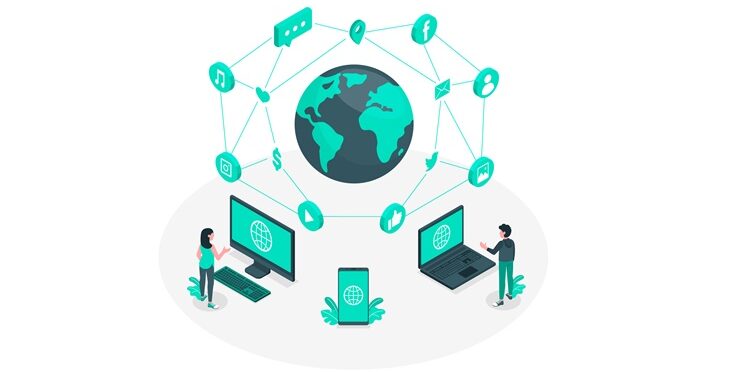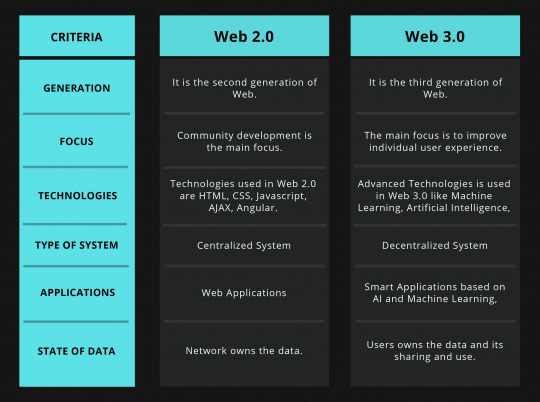How Web 3.0 differs from 2.0? This question is asked frequently when we come across Web 3.0 topics. In this article, we will explain to you what is web 3.0 and how it differs from web 2.0.
Web 2.0 and Web 3.0 are the successful versions of Web. Web 1.0 was introduced in the early 2000s. Today, the current web version is web 2.0 which we are familiar with. However, today’s web is static and has limitations as per individual needs. While using the internet we use the WWW system. We use WWW the World Wide Web to retrieve core information on the internet.
Tools for robotic process automation: List of Top 13 tools
What is Web 1.0?
Berners-Lee a computer scientist developed the internet at European researcher CERN. In October 1990, he introduced the three main technologies as well as the first webpage browser with the name WorldWideWeb.app. The three main technologies which later became the foundation of the internet are as follows:
- HTML: HTML is formatting language used to create webpages. The full form of HTML is Hypertext Markup Language.
- URI or URL: URL or URI is the unique address given to each resource available on the internet. Uniform Resource Identifier or Locator is the full form of URI or URL.
- HTTP, or Hypertext Transfer Protocol, is the technology that allows the resource to retrieve on the internet.
The web pages in Web 1.0 were static and most of the users were using the features such as email and real-time news. The application on Web 1.0 was less interactive.
What is Web 2.0?
Web 2.0 was a highly successful upgrade to Web 1.0. With Web 2.0 the view of how we use the internet was completely changed. Web 2.0 webpages have completely replaced the webpages of Web 1.0. The web pages of Web 2.0 are interactive and socially interconnected, and the content is user-generated. With the help of Web 2.0, user-generated resources are available to millions of users on the internet instantly.
There is some increase in the growth of Web 2.0 due to the majority of active users on social media and accessing the mobile internet. Similarly, Android and iPhone have also increased the growth in internet usage. Today many applications are dominating the market of online activity and utility. For instance, we use Facebook, LinkedIn, TikTok, Twitter, WhatsApp, etc platforms for continuous online interaction.
Millions of people are earning from the online platform, by delivering goods and services, delivering food items, and driving. Web 2.0 has become a great success for some industries. Whereas, some industries have failed to adopt the web model like retail, entertainment, media, etc.
Features of Web 2.0
- Users can retrieve and classify the data and it is free to sort the data.
- The content is dynamic which means it is responsive to the user’s input.
- Users can comment online to the site owner about the content and the site owner can exchange the information online with the user.
Usage of Web 2.0
Web 2.0 is full of interactive tools and platforms where user can share their opinions. Users can share their experiences by followings tools:
- Social Networking
- Voting on the web content.
- Sharing a blog.
- Vlogging.
- Social Media.
- Podcasting.
- Tagging other users on web content.
What is Web 3.0?
Web 3.0 is a decentralized web. It is based on machine learning and AI, making it more advanced than its previous versions. We can have real-world human communication with Web 3.0. It is highly secured for users. For instance, no one can track the activity of the users who visit any site.
One of the main reasons for Web 3.0 is that we can digitalize the assets. With the help of blockchain technology, we can convert our assets into tokens or digital representation. We have also seen some digital currencies like Cryptocurrency and NFTs (Non-Fungible Tokens).
Features of Web 3.0
- Semantic Web: Semantic web is the next evolution of web technologies. Instead of searching and analysing the word with keywords and numbers, the semantic web understands the meaning of the word and hence, it improves the web to create, share and connect the content.
- Artificial Intelligence: With the help of AI computers can understand the content on a level compared to human-like. This can provide faster results. But to achieve Artificial Intelligence, we have to combine semantic web with natural language processing.
- 3D Graphics: Web 3.0 consists of three-dimensional graphic designs. For instance, Computer games, eCommerce websites, and online Museum guides are all common on Web 3.0.
- Connectivity: With the help of semantic metadata, the information or the content is more connected. Therefore, users are able to fetch all available information easily.
- Ubiquity: Web 2.0 is already ubiquitous. In other words, the content and services on the internet are available everywhere and the users can access them from any device and from anywhere on the internet. With the increase of IoT devices, Web 3.0 will take ubiquity to a new level.
- Blockchain: Security is higher with blockchain technology. Users' data is protected and encrypted. Therefore, it prevents companies from using the users' information for their own purpose.
- Decentralized: Users can log into the website securely without being tracked with the help of decentralized data networks.
- Edge Computing: Edge computing is a technology that processes the data and apps on the network edge. It uses devices like mobile phones, laptops, appliances, etc.
How Web 3.0 differs from 2.0
Conclusion
Web 3.0 is the third generation. In the recent article of Gartner, it is mentioned that Web3 won’t overtake Web 2.0 in the enterprise before the end of the decade. The current version of Web 2.0 is static. Therefore, it is not possible to solve individual needs. Web 3.0 is the upgraded version and it is dynamic in nature. Therefore, every individual is able to interact with the internet. If we compare Web 3.0 with Web 2.0, Web 3.0 is more secure. We can store the data securely in a decentralized system. Therefore, it reduces the risk of data leaks.
You May Also Like To Read:
The 10 Best in class Ethereum Development Tools!






